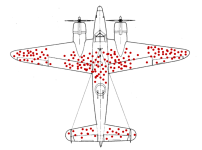prideandfall
Veteran Member
- Joined
- Jun 6, 2007
- Messages
- 2,118
- Location
- a drawer of inappropriate starches
- Basic Beliefs
- highly anti-religious agnostic
well... sort of.So, you're saying that differential voter turnout IS the defining partisan issue that decides elections. Republicans drive it better, so they win.
differential within pre-established voting blocs, not within the general population, and also drive is part of it but not all of it.
basically, trump won because obama was president for 8 years. obama won because bush was president for 8 years. bush won because clinton was president for 8 years. clinton was president because the boner for reagan was so throbbing it lasted through one more republican term. before reagan it was carter. before carter.... are you seeing the pattern here?
R gets a president, the liberals go slowly insane for a term or two, and then get really pissed off about how shitty that R was and come out enough to vote in a D.
D gets a president, the regressives go immediately insane basically forever, and then get really pissed off about the D sort of more or less stabilized the country after the disaster of the R and vote in another R.
back and forth, over and over, it's an endlessly repeating cycle and it always will be.
i think overall that sort of procedural sabotage is a much bigger systemic problem in this country than presidents are, and it's something democrats never pay any attention to.Gerrymandering is another thing they're good at. I think that if you handed one of those two factors over to Democrats, gerrymandering might have an effect, but turnout would have a bigger one. Just a gut feeling, though.

